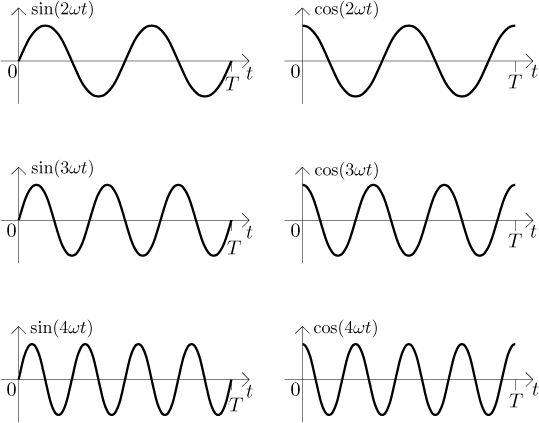Consider a positive number T. We will focus on the interval
[0,T ).
If we want to have sines a cosines fit well within this interval, we have to
scale them in horizontal direction so that their periods have length commeasurable
with T. It is easy to see that the scaling factor is exactly the number
ω = 2π/T.
Indeed, then we have the following picture.

When we introduce the integer k into the argument, we scale the two
functions again, but since the scaling factor is an integer now, we do not
spoil the nice fit.

When we work with functions as above, we usually immediately apply
substitution to scale them back to the natural interval
[0,2π].
For instance, one useful fact about these functions is proved like this:

This substitution goes both ways and without any trouble transforms the
setting
[0,T )
into the natural setting
[0,2π]
and back. Thus it is actually enough to know how to work with
2π-periodic functions and
other cases can be transformed to this basic one by substitution. For this
reason, some authors develop Fourier series only in this natural setting.
Since it is not much extra work, we decided to do it in general in order to
spare the reader this transforming business.



